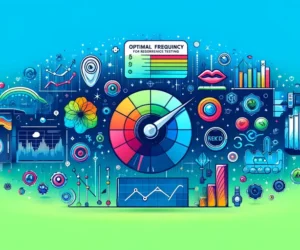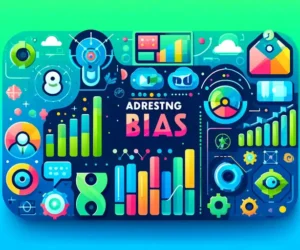
Machine Learning in Action: Real-Life Success Stories in Education

Introduction
Machine Learning (ML), a subset of artificial intelligence (AI), has become a transformational force in various sectors, including healthcare, finance, and entertainment. However, one of the most promising areas for ML application is education. The ability to analyze vast amounts of data and uncover correlations offers educators and institutions powerful tools to enhance learning experiences, personalize education, and optimize administrative processes. In this article, we will delve into real-life success stories that exemplify how machine learning is being utilized in educational settings, thereby reshaping traditional structures and methodologies.
Through concrete examples, we aim to demonstrate the diverse approaches institutions have adopted using ML, focusing on improving student engagement, academic performance, and operational efficiency. By highlighting these innovative strategies, we emphasize the importance of fostering an environment where technology and education coexist harmoniously, ultimately leading to a brighter future for learners and educators alike.
Enhanced Personalized Learning through Adaptive Learning Platforms
One of the most cited success stories of machine learning in education is the emergence of adaptive learning platforms. These are digital interfaces that utilize ML algorithms to analyze student performance in real-time and tailor educational content to meet individual learning needs. A quintessential example is DreamBox Learning, an online math program for students in kindergarten through eighth grade. DreamBox employs sophisticated data analytics to track students' interactions with the platform, assessing their strengths and weaknesses.
How DreamBox Learning Works
When a student begins a math lesson on DreamBox, the platform assesses their existing knowledge through pre-tests and initial problem-solving exercises. As they continue to engage with the system, it captures data related to the types of problems they struggle with, their pacing, and their overall performance patterns. Utilizing this information, DreamBox’s adaptive algorithms can adjust the difficulty level of the questions presented to the user. Consequently, learners receive a personalized learning pathway that ensures they are neither overwhelmed nor under-challenged, fostering an effective learning experience.
Measurable Outcomes and Impacts
The results from implementing DreamBox Learning have shown remarkable progress in student comprehension and retention. Case studies revealed that students using DreamBox outperformed their peers in schools without such an adaptive learning platform, highlighting the significance of a tailored educational approach. Additionally, educators are empowered with comprehensive analytics that provide insights into student progress, enabling them to make informed decisions and adapt their teaching strategies accordingly.
The integration of machine learning in adaptive learning platforms like DreamBox illustrates an evolving educational paradigm in which personalized education is not just an aspiration but a tangible reality. This change not only enhances academic performance but also promotes student engagement and motivation, making education more accessible for diverse learners.
AI-Powered Learning Analytics for Student Success
Another impactful application of machine learning in education is the development of learning analytics. This involves the systematic use of data to understand and improve student learning outcomes. By employing machine learning algorithms, educational institutions can harness vast datasets, including grades, attendance records, and engagement metrics, to gain a clear picture of student performance.
The University of Michigan’s LEAD Initiative
A notable example is the Learning Analytics for Student Success initiative at the University of Michigan. The university's team developed a machine learning model to predict which students were at risk of failing or dropping out. By analyzing historical data and identifying patterns, the model could predict potential issues before they became critical.
When implemented, this model allowed educators and advisors to intervene early with targeted support measures for at-risk students. For instance, if a student's data indicated a decline in participation or exam scores, the system could automatically flag that student for additional academic advising or support services.
The Impact on Retention Rates
The results of the LEAD initiative were impressive. Institutions that adopted this predictive analytics approach witnessed a significant improvement in retention rates. By catching potential problems early, the university was able to offer timely interventions tailored to individual needs, which eventually increased student satisfaction and success. Furthermore, faculty reported feeling more equipped to support their students, as they received actionable insights from the analytics.
Incorporating machine learning into learning analytics not only enhances the educational infrastructure but also promotes a culture where student success is prioritized. This proactive approach equips educators with the tools they need to make data-driven decisions that ultimately lead to better outcomes for learners.
Automating Administrative Processes

In addition to directly impacting student learning, machine learning is also transforming the administration of education. The operational efficiencies gained through automation can redirect resources toward enhancing the learning experience rather than merely managing administrative tasks.
Intelligent Chatbots and Virtual Assistants
The deployment of chatbots and virtual assistants in educational settings serves as a prime example of this. Institutions like Georgia State University have adopted AI-driven chatbots to assist with various administrative inquiries, from enrollment processes to financial aid questions.
The Role and Impact of Chatbots
These chatbots operate 24/7 and can handle thousands of inquiries simultaneously, significantly reducing waiting times for students and allowing staff to focus on more complex issues. For instance, upon admission, students can ask the chatbot about their application status, course registration, or even campus resources. As a result, the administrative workflows become streamlined, reducing the burden on human staff while enhancing student satisfaction through immediate responses.
Quantitative Benefits
The success stories are substantial – institutions using chatbots report a higher rate of student engagement, increased application completions, and improved overall communication efficiency. By automating routine queries, educational staff have the chance to allocate their time and expertise to more strategic initiatives, such as developing curriculum innovations or supporting at-risk students. This fundamentally changes the dynamic of educational institutions, as they become more responsive and adaptive to student needs.
Making Learning Inclusive
Another vital avenue for machine learning in education is its potential to foster inclusivity. For students with disabilities or those requiring special accommodations, machine learning can be harnessed to create more accessible learning environments.
Tools for Differentiated Learning
Innovative companies like Glean focus on creating tools that utilize machine learning features to help students with diverse learning styles excel. Glean provides note-taking software that adapts to students' unique preferences, allowing for audio recordings, visual representations, and structured tools designed for various cognitive processes.
Supporting Diverse Learning Needs
By analyzing user behavior and engagement levels, Glean’s system begins to understand how individual students best absorb information. It then tailors the note-sharing process according to these preferences, leading to a more personalized and effective learning experience. Educators can also use insights gleaned from this data to diversify their teaching methods, ensuring all students, regardless of their abilities, can participate and thrive.
The Impact on Student Engagement
The impact of these adaptive tools cannot be overstated. Students who previously struggled with traditional forms of learning now feel empowered to participate fully in their education, leading to improved self-esteem and academic performance. By leveraging machine learning, educational institutions can create an environment where inclusivity is not just a goal but a foundational principle.
Conclusion
Machine learning is no longer a futuristic concept confined to the realms of data science and tech giants; it has firmly established itself as a cornerstone of modern education. Through the use of adaptive learning platforms, learning analytics, automated administrative processes, and inclusive educational tools, we are witnessing a remarkable metamorphosis in how knowledge is imparted, assessed, and improved.
These real-life success stories exemplify the potential within educational institutions to harness the power of machine learning, ultimately resulting in a more personalized, efficient, and inclusive educational experience. As educational technology continues to evolve, it is imperative for institutions to remain open and adaptive to these transformative tools, ensuring they meet the dynamic needs of learners today and tomorrow.
The integration of machine learning in education not only enhances outcomes for students but also empowers educators to become more effective facilitators of learning. As we look to the future, it’s exciting to contemplate the possibilities of further advancements in machine learning, not only in education but also in creating more equitable and supportive learning environments for every student. This revolution is just beginning, and with it comes the potential for much greater achievements in the realm of education.
If you want to read more articles similar to Machine Learning in Action: Real-Life Success Stories in Education, you can visit the Education Technology category.



You Must Read